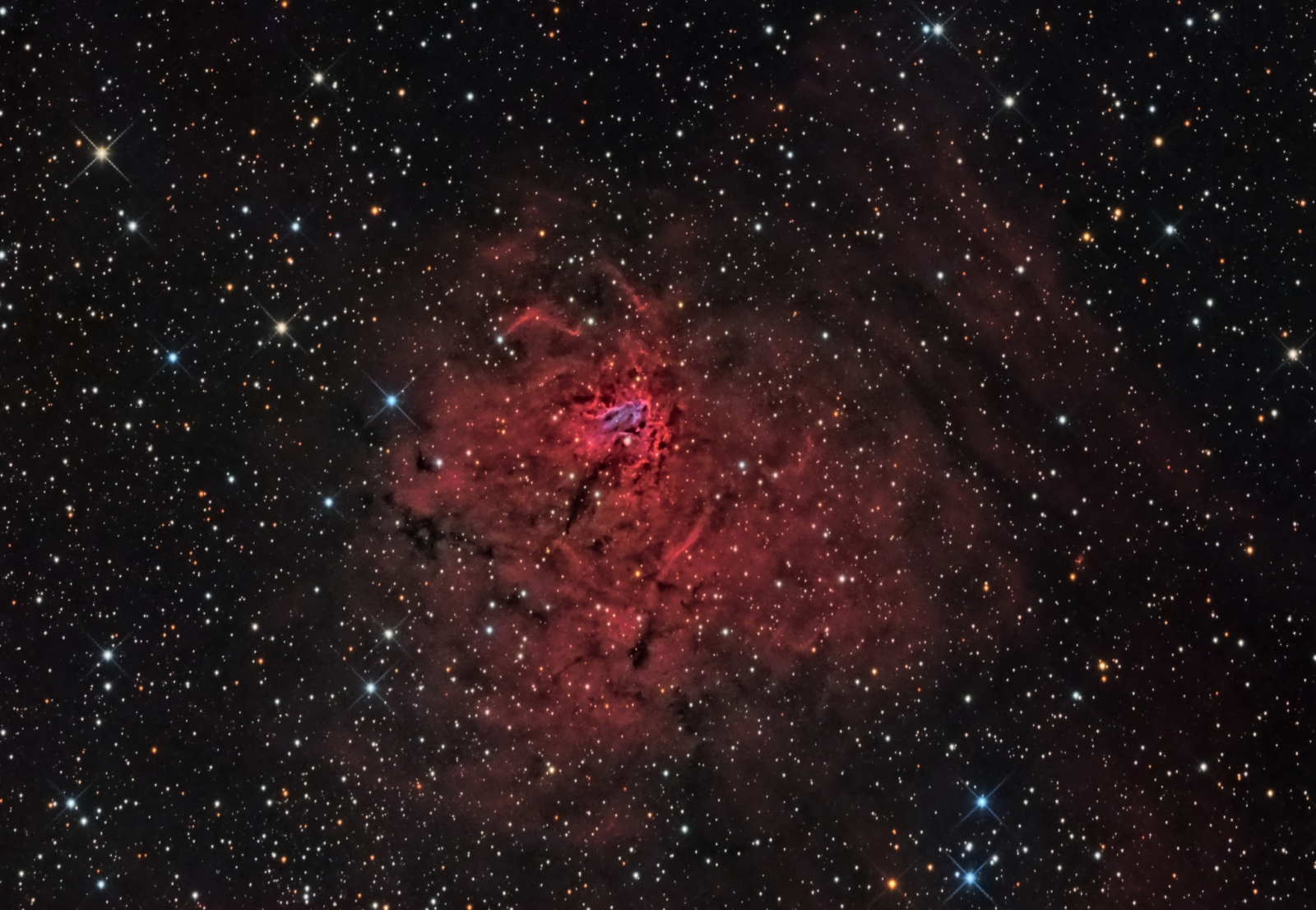NGC1491 Emission Nebula
Click image for full size version
January 1, 2015 – HAPPY NEW YEAR
I imaged NGC1491 under a nearly full moon in 2011 using a different camera than I use now. Although the more than 10 hours of data was good, I was never satisfied with my previous attempt at processing it. This emission nebula is located in the constellation Perseus at a distance of about 11,400 light years. The star in the centre of the brightest part of the nebula is causing it to glow. A bubble is being blown here, a bit like the Bubble Nebula. However, unlike the Bubble Nebula, NGC1491 shows some delicate blue reflection nebula in the centre.
Tekkies:
QSI583wsg camera, Astrodon 5 nm Ha filter, and a 10″ ASA reflector at f/3.6 on a MI-250 mount, from my SkyShed in Guelph. A SX Lodestar camera was used to guide through the QSI’s guide port. FocusMax for focusing. MaximDL for acquisition, guiding and calibration. All processing in PixInsight. Nearly full moon, no cloud, average transparency and average seeing.
7x10m R, 8x10mG, 11x10mB and 18x20m Ha (total 10hr20m).
Ha, R, G and B masters were cropped to remove edge artifacts from stacking. The R, G and B channels were combined to make an RGB image. Ha and RGB were processed with DBE, combined with the NB-RGB script, and Colour Calibration was applied. HistogramTransformation was applied, followed by TGVDenoise and another HistogramTransformation to reset the black point.
Synthetic Luminance:
Creation and cleanup: The R,G,B and Ha masters were combined using the ImageIntegration tool (average, additive with scaling, noise evaluation, iterative K-sigma / biweight midvariance, no pixel rejection). DBE was applied to neutralize the background.
Deconvolution: A star mask was made to use as a local deringing support. A copy of the image was stretched to use as a range mask. Deconvolution was applied (100 iterations, regularized Richardson-Lucy, external PSF made using DynamicPSF tool with about 40 stars).
Stretching: HistogramTransformation was applied, followed by TGV Denoise and another HistogramTransformation to reset the black point. No pixels were clipped during either stretch. The Curves tool was used to boost brightness, contrast and saturation of the nebula.
Combining SynthL with HaRGB:
The luminance channel was extracted, processed and then added back into the HaRGB image as follows:
1. Extract luminance from the HaRGB image.
2. Apply LinearFit using the SynthL channel as a reference.
3. Use ChannelCombination in the Lab mode to replace the luminance of the HaRGB with the fitted luminance from step 2.
4. LRGBCombine was then used to make a SynthLHaRGB image.
Final Processing:
HDRMultiscaleTransform was applied at 6 and 4 pixel scales using a mask to protect stars and background. Then LocalHistogramEqualization was used to restore contrast. Small-scale structures were isolated using MultiscaleLinearTransform (4 wavelet layers, residual layer deselected) on a copy of the SynthLHaRGB image. Large-scale structures were isolated by subtracting the small-scale image from the SynthLHaRGB (no rescaling). A duplicate of the small-scale image was used as a mask on the small-scale image and contrast was boosted. Colour saturation and contrast were boosted on the large-scale image. Then small-scale and large-scale images were added back together in PixelMath. The DarkStructureEnhance script was applied (strength 0.25, 8 wavelet layers) and colour saturation and contrast were adjusted slightly. Large scale ACDNR was applied using a mask to protect all but the darkest parts of the image. The image was re-scaled to about 80% to reduce graininess.
Image scale for this telescope/camera/rescaling combination is about 1.5 arcsec/pixel.







Leave A Comment